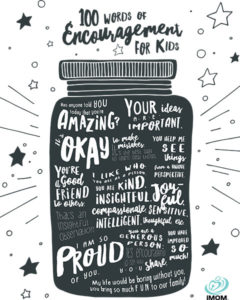The first winter break of my freshman year of college was one I’ll always remember. I was so excited to come home from school and hang out with all my friends for the first time in months. My parents had other plans. They booked an epic family vacation to San Francisco, one they were so excited to take my sister and me on. I acted like a spoiled brat, pouting that I couldn’t experience the break the way I wanted. In hindsight, my mom knew that while my friendships were important, reinforcing our strong family identity was something I needed even more.
I am grateful for the small things my parents did that helped create a strong family and I always knew I’d aim for the same with my own. Family life looks different for me than I thought it would. I went through a divorce several years ago and now both my ex-husband and I are remarried to other people. Fortunately, these 7 things that create healthy, strong families can be accomplished no matter what your family looks like.
Key #1: Modeling
What your kids see you do as they grow up is what you’ll likely see them do when they’ve grown up. What do your children see modeled in your character? Do they see honesty and integrity in action? Do they have healthy examples of conflict-resolution skills? Do you appreciate and promote their uniqueness? Do you model and encourage a healthy experience and expression of emotions? The greatest gift you can give your child is who you are. The lifestyle our children see us model daily is much more powerful than what we tell them. Both are important. But there must be congruity between the talk and the walk.
Key #2: Time
Most children spell love with a T, an I, an M, and an E. That’s right. TIME is how most children spell love. Healthy parents don’t find time—they make time. Why is it so difficult? We’re all busy with demands and pressures. In the midst of this busyness, our children can easily seem like an interruption. It is unrealistic for us to always drop everything and cater to our kids’ demands. But we need to remember that children don’t have the same sense of time that we do. How can we “make time?” One way is to set aside special times for them. Acknowledge them when they get up in the morning or when they get home from school or another event. Set aside quantity time at certain times during the week.
Key #3: Nourishing Love
Learn how to say “I love you” in more than one way. The apostle Paul gave wise counsel to husbands and wives. He tells us that two key activities in a loving relationship are cherishing and nourishing the other person. Cherishing is the easy part. When you cherish something, it means you value and care about it. It is important to you. However, you may not express it. That’s where nourishing comes in. Nourishing involves going beyond the attitude to the action. Quality nourishment involves stopping, looking, listening, and studying that special person.
Key #4: An Encouraging Environment
An encouraging environment is one in which we spend more time building and encouraging our loved ones than we do scolding and correcting them. It’s one in which we honor them by speaking respectfully to them. An encouraging environment is one where our emphasis is on catching those we love doing good rather than catching them making mistakes. We invest more energy in praising them for being successful than in criticizing and castigating them for falling short of our expectations.
Key #5: Healthy Anger
What do you think of when you hear the word anger? Is all anger bad? Can this unwelcome and potentially destructive emotion be considered a gift rather than a time bomb? A healthy home is where people express anger in HEALTHY ways. The surprising truth is that when a person understands anger and learns how to express it in healthy ways, it can be an ally and actually lead to increased trust, greater intimacy, and stronger relationships. While we may have minimal control over when we experience anger, we have almost total control over how we choose to express that anger.
Key #6: Quality Communication
A characteristic of a strong family is that the members talk more to each other, convey feelings that they understand what is being said to them, keep communication channels open, show more sensitivity to each other’s feelings, and realize the importance of nonverbal aspects of communication. Since good communication doesn’t just happen, smart families set aside a regular time each week for focused communication.
Key #7: Conflict as a Pathway to Intimacy
Most of us haven’t learned the value of conflict. We misunderstand its potential and may interpret it as an attack. Conflict is the process we go through and the price we pay for intimacy. When we avoid healthy conflict, we avoid growth.
The next time conflict stares you in the face, try these three simple steps. First, make your primary goal to understand the other person. Take a few minutes to acknowledge, discuss and define the conflict and then listen. Second, ask yourself, “What is MY contribution to the problem?” Most of us find it easier to identify the other person’s contribution to the problem, how he or she needs to change, and what he or she could do differently without acknowledging that we need to change, too. Third, commit yourself to understanding what the issue looks like through the other person’s eyes.
Tell us! What do you think is important in building strong families?











